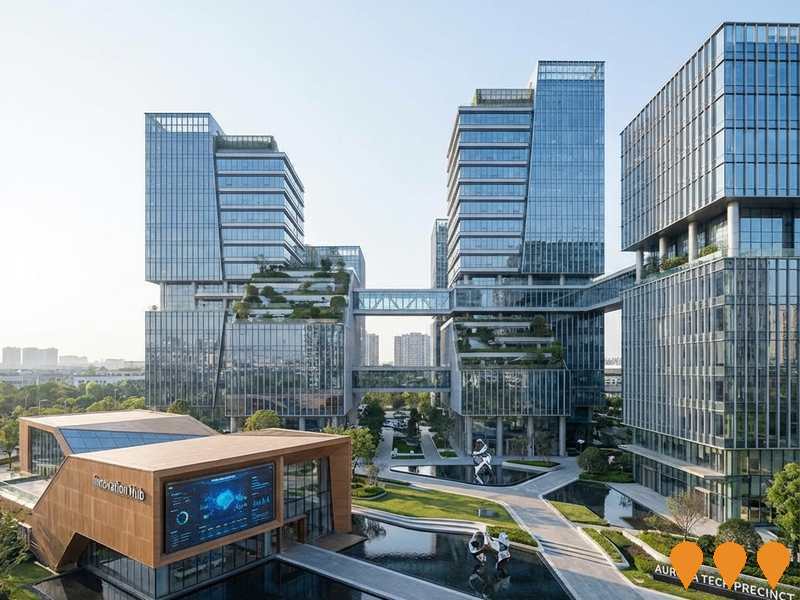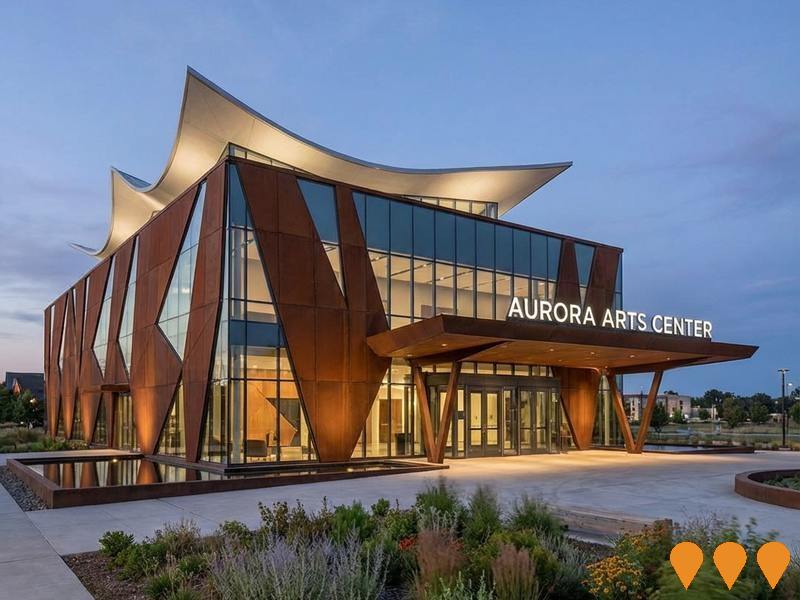Chart Color Schemes
est. as @ -- *
ABS ERP | -- people | --
2021 Census | -- people
Sales Activity
Curious about local property values? Filter the chart to assess the volume and appreciation (including resales) trends and regional comparisons, or scroll to the map below view this information at an individual property level.
Find a Recent Sale
Sales Detail
Population
Forrest lies within the top quartile of areas nationally for population growth performance according to AreaSearch analysis of recent, and medium to long-term trends
Forrest's population, as of August 2025, is approximately 1,903. This figure represents an increase of 76 people since the 2021 Census, which recorded a population of 1,827. The change was inferred from the estimated resident population of 1,897 in June 2024 and an additional 7 validated new addresses since the Census date. This results in a population density ratio of 1,196 persons per square kilometer, which is higher than the average across national locations assessed by AreaSearch. Forrest's growth rate of 4.2% since the census places it within 1.5 percentage points of the state's growth rate of 5.7%, indicating competitive growth fundamentals. Overseas migration contributed approximately 87.7% of overall population gains in recent periods, driving primary population growth in the area.
AreaSearch uses ABS/Geoscience Australia projections for each SA2 area released in 2024 with a base year of 2022. For areas not covered by this data and years post-2032, age group growth rates from the ACT Government's SA2 area projections are adopted, using 2022 as the base year. Demographic trends project an above median population growth for national statistical areas, with Forrest expected to increase by 288 persons to reach a total of 2,195 by 2041, reflecting a 14.8% increase over the 17-year period.
Frequently Asked Questions - Population
Development
AreaSearch analysis of residential development drivers sees Forrest recording a relatively average level of approval activity when compared to local markets analysed countrywide
Forrest has received approximately 8 dwelling approvals per year over the past 5 financial years, totalling around 40 homes. As of FY26, 2 approvals have been recorded. On average, each dwelling built since FY21 has attracted about 2.9 new residents annually, indicating steady demand that supports property values. The average expected construction cost for these dwellings is $946,000, reflecting a focus on premium properties.
In FY26, Forrest has seen around $21.1 million in commercial development approvals, suggesting moderate levels of commercial growth compared to the Australian Capital Territory's regional average (51.0% below). Recent construction comprises 43.0% standalone homes and 57.0% medium and high-density housing, catering to various buyer segments including downsizers, investors, and entry-level buyers. Forrest's population density is around 341 people per approval, indicating a mature market with projected growth of 282 residents by 2041. Construction pace has been reasonable, but increased competition among buyers can be expected as the population grows.
Population forecasts indicate Forrest will gain 282 residents through to 2041. Construction is maintaining a reasonable pace with projected growth, although buyers could encounter growing competition as population increases.
Frequently Asked Questions - Development
Infrastructure
Forrest has moderate levels of nearby infrastructure activity, ranking in the top 50% nationally
Changes to local infrastructure significantly impact an area's performance. AreaSearch has identified two projects that may affect this region. Notable projects are Kingston Arts Precinct, Griffith-Narrabundah Community Centre & Oval Upgrade, Kingston Foreshore Precinct, and Cromwell Office Building Development. The following list details those most relevant:.
Professional plan users can use the search below to filter and access additional projects.
INFRASTRUCTURE SEARCH
 Denotes AI-based impression for illustrative purposes only, not to be taken as definitive under any circumstances. Please follow links and conduct other investigations from the project's source for actual imagery. Developers and project owners wishing us to use original imagery please Contact Us and we will do so.
Denotes AI-based impression for illustrative purposes only, not to be taken as definitive under any circumstances. Please follow links and conduct other investigations from the project's source for actual imagery. Developers and project owners wishing us to use original imagery please Contact Us and we will do so.
Frequently Asked Questions - Infrastructure
Canberra Hospital Master Plan
Long-term transformation of Canberra Hospital campus (2021-2041). The new Critical Services Building (Building 5) opened in 2023. Multiple stages are now in construction or detailed planning, including SPIRE Stage 1 (new emergency, surgical and intensive care facilities) and ongoing campus renewal works to deliver modern clinical facilities.

Kingston Arts Precinct
New $36 million performing and visual arts hub including a 250-seat theatre, gallery, rehearsal spaces and artist studios within the historic Fitters Workshop and former Transport Depot.
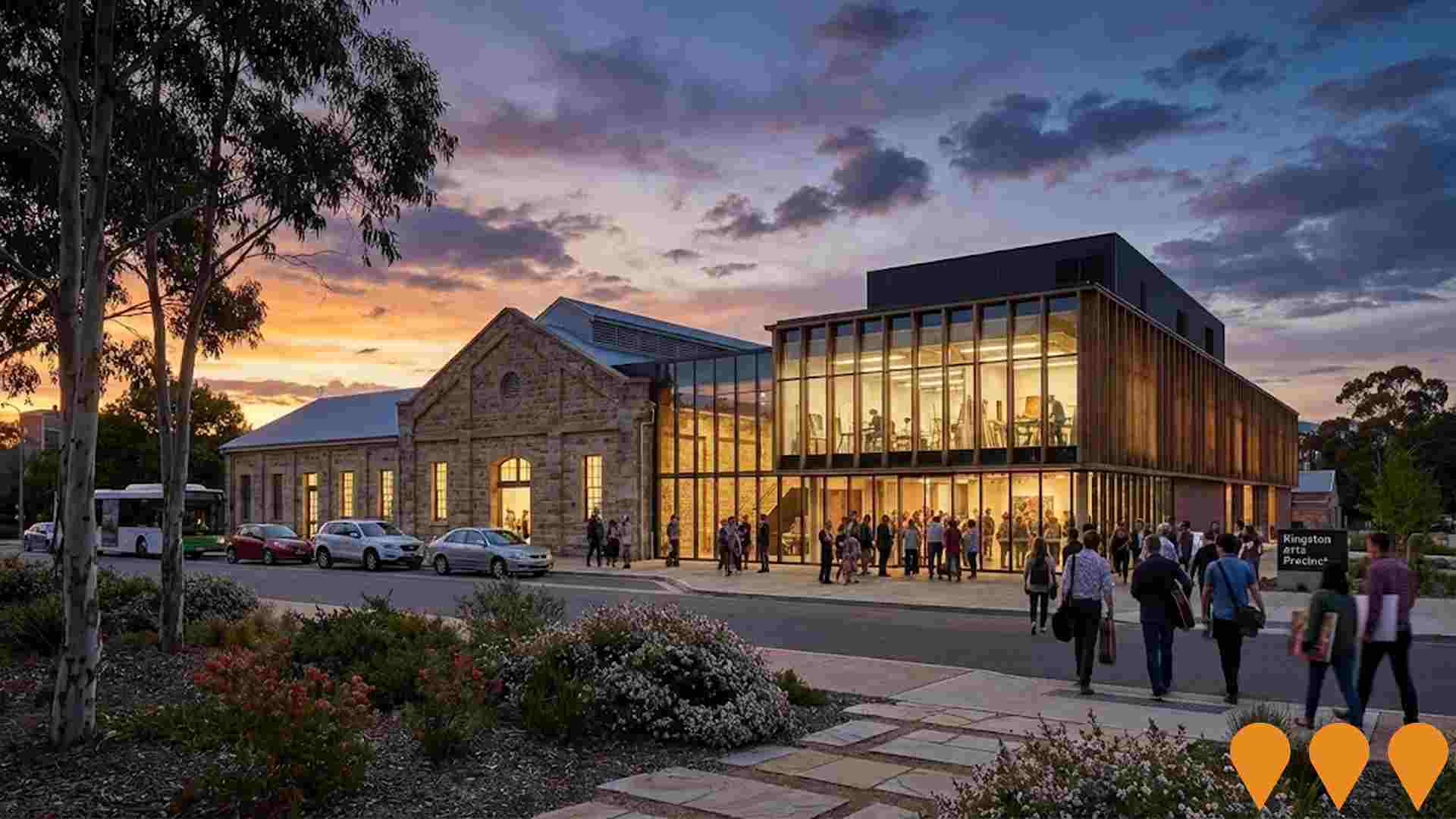
Kingston Foreshore Precinct
Award-winning mixed-use waterfront precinct featuring premium apartments, restaurants, bars, retail, public art and parklands along the southern shore of Lake Burley Griffin.
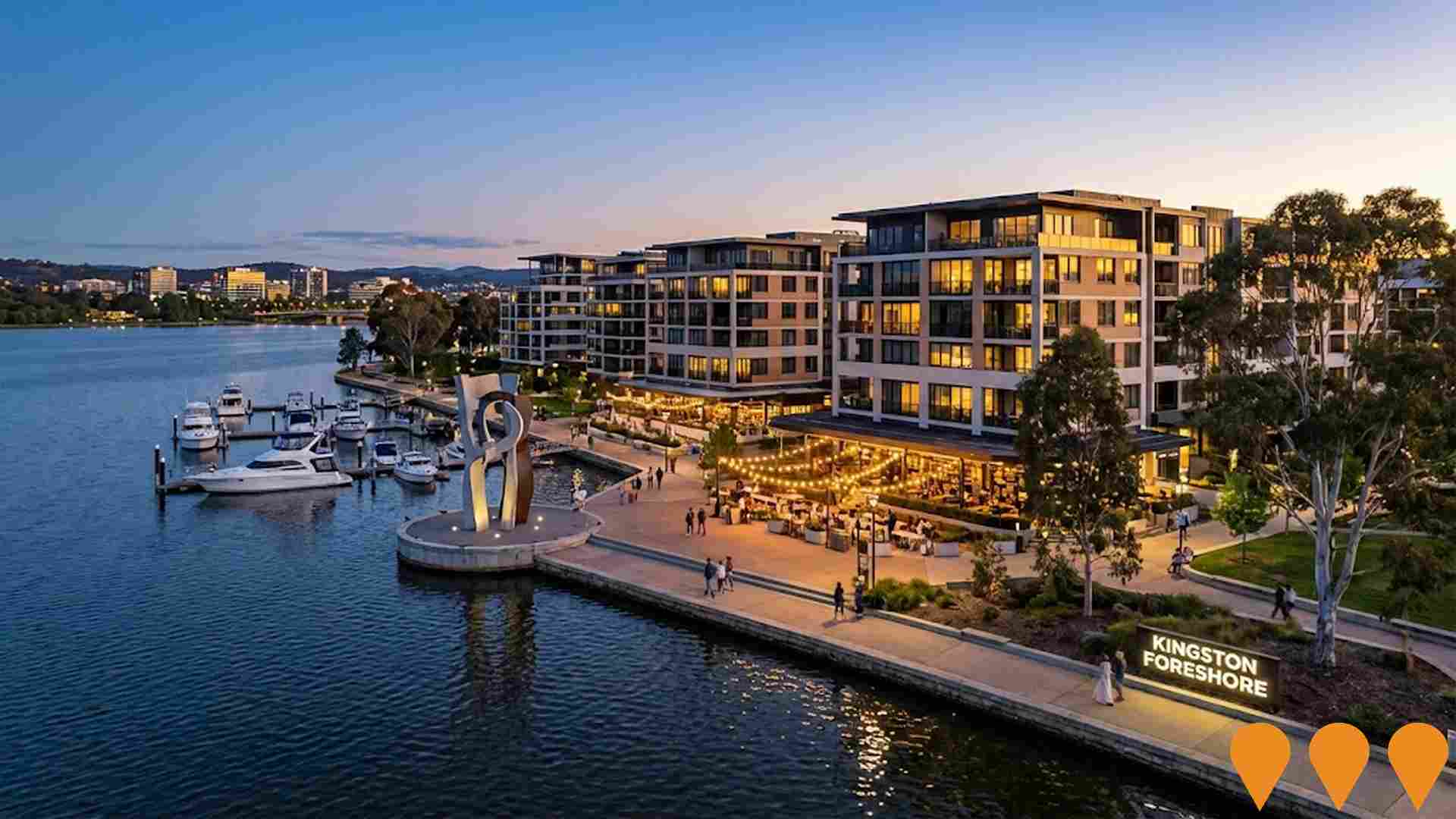
Enhanced bus and light rail corridors (Belconnen & Queanbeyan to Central Canberra)
ACT is progressing an integrated program to enhance high-frequency bus and future light rail corridors that link Belconnen and Queanbeyan with central Canberra. Light Rail Stage 2A (City to Commonwealth Park) commenced construction in early 2025 with services targeted from 2028, while planning and approvals continue for Stage 2B to Woden. The ACT Government has acknowledged and is planning upgrades for the Belconnen-to-City bus corridor as groundwork for a future east-west light rail Stage 3, and is coordinating cross-border public transport initiatives with NSW through the Queanbeyan Region Integrated Transport Plan and the ACT-NSW MoU for Regional Collaboration.
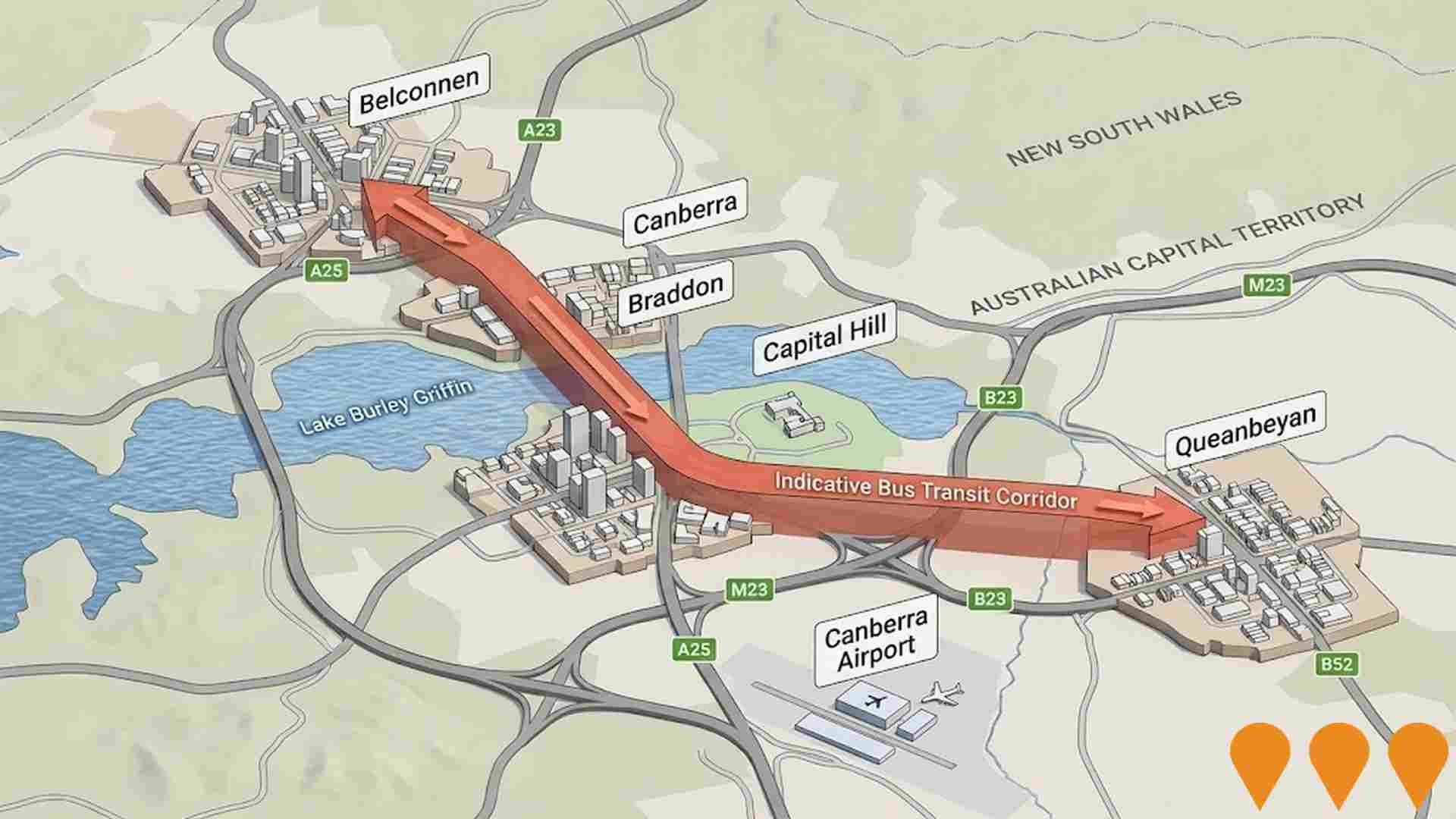
Griffith-Narrabundah Community Centre & Oval Upgrade
New multi-purpose community centre and upgrades to Griffith Oval including new pavilion, play spaces and improved amenities serving both Griffith and Narrabundah residents.

Draft Inner South District Strategy
A strategic planning framework by the ACT Government to guide the future development of the Inner South district, including Deakin. The strategy proposes to manage growth and change, potentially allowing for increased housing density, particularly in West Deakin and along the new light rail corridor. It aims to protect the valued characteristics of the district while accommodating future population growth.
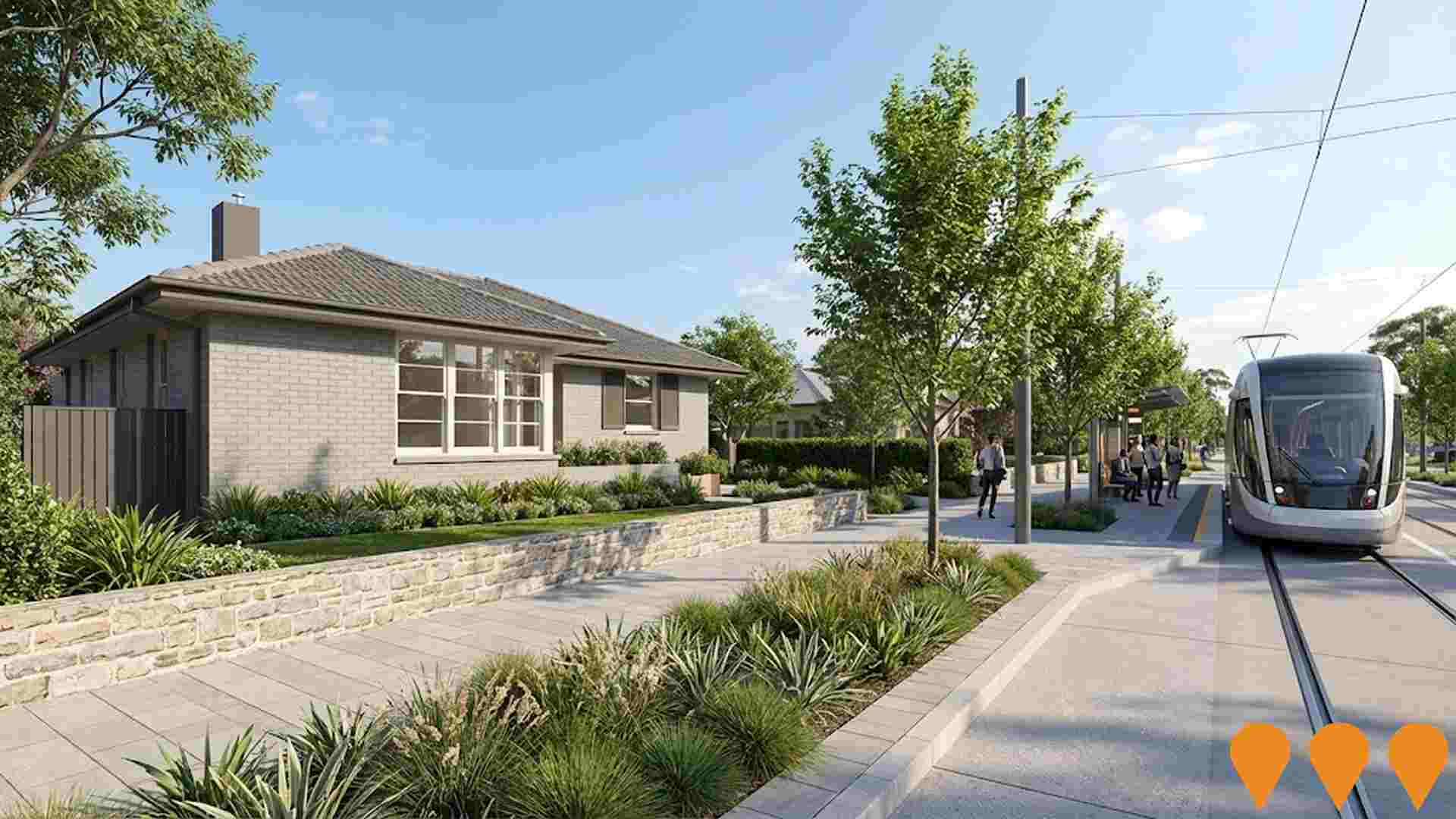
Deakin District Playing Fields Upgrade
Upgrades to the Deakin District Playing Fields, including the installation of new LED sportsground floodlighting to allow for night games.

Deakin Private Hospital
Deakin Private Hospital offers premium and integrated inpatient, day therapy, and hospital-in-the-home services, focusing on individualised and high-quality mental health treatment. It includes a Specialised PTSD & Trauma Support Unit for military and first responders, and services such as Repetitive Transcranial Magnetic Stimulation (rTMS) for depression. The hospital also features co-located clinics and is supported by a multidisciplinary team of Psychiatrists, Medical, Nursing, and Allied Health professionals.

Employment
The exceptional employment performance in Forrest places it among Australia's strongest labour markets
Forrest has an educated workforce with professional services well represented. Its unemployment rate was 0.7% in the year ending June 2025.
Employment grew by 1.4% during this period. As of June 2025, 1,199 residents were employed, while the unemployment rate was 2.7 percentage points lower than the Australian Capital Territory's rate of 3.4%. Workforce participation was similar to the ACT's 69.6%. Dominant employment sectors included public administration & safety, professional & technical services, and health care & social assistance.
The area had a notable concentration in professional & technical jobs, with levels at 1.4 times the regional average. Conversely, accommodation & food services showed lower representation at 2.7% compared to the regional average of 6.5%. Forrest hosted more jobs than residents, with 2.6 workers per resident as of the Census. Over the year ending June 2025, employment increased by 1.4%, while labour force grew by 1.7%, raising the unemployment rate by 0.3 percentage points. In contrast, the ACT experienced employment growth of 1.9% and labour force growth of 1.6%, with a 0.3 percentage point drop in unemployment. Jobs and Skills Australia's national employment forecasts from May 2025 project overall growth of 6.6% over five years and 13.7% over ten years. Applying these projections to Forrest's employment mix suggests local growth of approximately 6.9% over five years and 14.0% over ten years, though these are simple extrapolations for illustrative purposes only.
Frequently Asked Questions - Employment
Income
The economic profile demonstrates exceptional strength, placing the area among the top 10% nationally based on comprehensive AreaSearch income analysis
Forrest had a median taxpayer income of $98,598 and an average income of $160,236 in financial year 2022. These figures place Forrest among the top percentile nationally, compared to the Australian Capital Territory's median and average incomes of $68,678 and $83,634 respectively. By September 2025, estimated median and average incomes would be approximately $112,007 and $182,028, based on a 13.6% Wage Price Index growth since financial year 2022. According to the 2021 Census, Forrest's household, family, and personal incomes rank highly nationally, between the 99th and 100th percentiles. In Forrest, 42.0% of individuals have an income of $4000+, unlike regional trends where 34.3% fall within the $1,500 - $2,999 range. The locality demonstrates affluence with 54.2% earning over $3,000 per week, supporting premium retail and service offerings. After housing costs, residents retain 89.4% of their income, reflecting strong purchasing power. Forrest's SEIFA income ranking places it in the 10th decile.
Frequently Asked Questions - Income
Housing
Forrest features a more urban dwelling mix with significant apartment living, with above-average rates of outright home ownership
The dwelling structure in Forrest, as per the latest Census data, consisted of 36.5% houses and 63.5% other dwellings (semi-detached, apartments, 'other' dwellings). In comparison, Australian Capital Territory had 40.7% houses and 59.3% other dwellings. Forrest's home ownership rate was 38.2%, with mortgaged dwellings at 31.3% and rented dwellings at 30.5%. The median monthly mortgage repayment in Forrest was $2,520, higher than the Australian Capital Territory average of $2,275. The median weekly rent figure in Forrest was $570, compared to Australian Capital Territory's $500. Nationally, Forrest's mortgage repayments were significantly higher at $2,520 versus the Australian average of $1,863, and rents were substantially above the national figure of $375.
Frequently Asked Questions - Housing
Household Composition
Forrest features high concentrations of group households, with a fairly typical median household size
Family households account for 67.2% of all households, including 23.7% couples with children, 37.0% couples without children, and 4.9% single parent families. Non-family households constitute the remaining 32.8%, with lone person households at 29.2% and group households comprising 4.3%. The median household size is 2.2 people, which aligns with the Australian Capital Territory average.
Frequently Asked Questions - Households
Local Schools & Education
Forrest shows strong educational performance, ranking in the upper quartile nationally when assessed across multiple qualification and achievement indicators
Forrest's educational attainment significantly exceeds broader benchmarks. Among residents aged 15+, 64.6% hold university qualifications, compared to Australia's 30.4% and the SA4 region's 46.8%. This high level of educational attainment positions Forrest strongly for knowledge-based opportunities. Bachelor degrees are the most common at 32.1%, followed by postgraduate qualifications (25.3%) and graduate diplomas (7.2%).
Technical qualifications represent 14.4% of educational achievements, with advanced diplomas accounting for 7.9% and certificates for 6.5%. Educational participation is notably high in Forrest, with 25.0% of residents currently enrolled in formal education. This includes 8.6% in tertiary education, 7.4% in secondary education, and 6.2% pursuing primary education. Forrest Primary School provides local educational services within Forrest, enrolling 476 students as of the latest data. The school focuses exclusively on primary education, with an Index of Community Socio-Educational Advantage (ICSEA) score of 1138. Secondary educational options are available in surrounding areas.
Frequently Asked Questions - Education
Schools Detail
Nearby Services & Amenities
Transport
Transport servicing is good compared to other areas nationally based on assessment of service frequency, route connectivity and accessibility
Forrest has 13 operational public transport stops, all serving buses. These stops are covered by 7 distinct routes, offering a total of 661 weekly passenger trips. Forrest's residents enjoy good transport accessibility, with an average distance of 282 meters to the nearest stop.
The service frequency is 94 trips daily across all routes, resulting in about 50 weekly trips per individual stop.
Frequently Asked Questions - Transport
Transport Stops Detail
Health
The level of general health in Forrest is notably higher than the national average with both young and old age cohorts seeing low prevalence of common health conditions
Forrest demonstrates above-average health outcomes with both young and old age cohorts seeing low prevalence of common health conditions. The rate of private health cover is exceptionally high at approximately 88% of the total population (1,672 people), compared to 78.0% across Australian Capital Territory and a national average of 55.3%. The most common medical conditions in the area are arthritis and asthma, impacting 7.8 and 7.8% of residents respectively, while 68.9% declared themselves completely clear of medical ailments compared to 69.8% across Australian Capital Territory.
The area has 26.3% of residents aged 65 and over (500 people), which is higher than the 19.9% in Australian Capital Territory. Health outcomes among seniors are particularly strong, performing even better than the general population in health metrics.
Frequently Asked Questions - Health
Cultural Diversity
Forrest was found to be more culturally diverse than the vast majority of local markets in Australia, upon assessment of a range of language and cultural background related metrics
Forrest's population showed higher cultural diversity compared to most local markets, with 25.9% born overseas and 20.0% speaking a language other than English at home. Christianity was the predominant religion in Forrest, accounting for 49.0% of its population. Notably, Judaism was slightly overrepresented, comprising 0.8% compared to the Australian Capital Territory's 0.6%.
The top three ancestry groups were English (23.7%), Australian (20.2%), and Irish (10.5%). Some ethnic groups showed notable differences in representation: Polish at 1.4% (vs regional 1.0%), French at 1.1% (vs 0.9%), and Scottish at 9.6% (vs 8.5%).
Frequently Asked Questions - Diversity
Age
Forrest hosts an older demographic, ranking in the top quartile nationwide
The median age in Forrest is 47 years, which is significantly higher than the Australian Capital Territory's average of 35 years and also considerably older than Australia's national average of 38 years. Compared to the Australian Capital Territory, Forrest has a higher concentration of residents aged 55-64 (16.3%) but fewer residents aged 5-14 (6.9%). This concentration of 55-64 year-olds is well above the national average of 11.2%. According to the 2021 Census, the population aged 75-84 has grown from 8.1% to 10.3%, while the 55-64 age group increased from 14.7% to 16.3%. Conversely, the 45-54 age group has declined from 15.4% to 12.8%, and the 5-14 age group dropped from 8.9% to 6.9%. Looking ahead to 2041, demographic projections show significant shifts in Forrest's age structure. The 65-74 age group is projected to grow by 57% (144 people), reaching 396 from 251. Notably, the combined age groups of 65 and above will account for 70% of total population growth, reflecting Forrest's aging demographic profile. In contrast, both the 15-24 and 0-4 age groups are projected to see reduced numbers.
